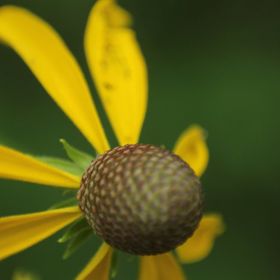Same photographer See allBehind The Lens
Behind The Lens
Location
I simply took this photo in my own back yard.My yellow lab apparently thought his water bowl wasn't big enough. So he decided the birdbath would be a better choice.Time
This was about the middle of the day, and not knowing how long I would be able to catch him 'in the act', I had to quickly set the shutter speed quickly. I actually had enough lighting from the time of day that the f/stop wasn't a significant problem nor did I have time to adjust every setting. Most of my settings were already adjusted for daylight because of earlier shots that morning.Lighting
The time of day provided enough light, even with a fast shutter, that the photo turned out better than I thought.Equipment
I, believe it or not used a Canon Rebel FILM camera. Yes, this photo was taken with Fuji film. Actually this was my first camera. Just a quick handheld capture.Inspiration
I just love my dog!Editing
All I did was some cropping to bring my subject 'closer'. It wasn't until after I cropped it that I noticed the water droplets.Frozen. At first, because of the water drops alone, it never crosses peoples minds that this is NOT a DSLR shot. It was simply a Canon SLR film camera(Rebel, a very great model and series). I also own the Canon DSLR 550D or the Rebel T2i.In my camera bag
I keep two DSLR camera's with me at all times. The Canon 550D and my Canon 60D. I try to keep macro lenses and telephoto lenses with me. I also have several filters(a large variety). Filters in the ND area and general UV and polarizers.Feedback
To capture a photo like this will be dependent on your conditions. Be ready for sudden changes. Always anticipate for sudden changes. In this photo I had to assume the chance for the shot would available for a very short time span. That's why I chose the higher shutter speed. Always take multiple shots, back to back. No pause in between. Ten shots, for example, will each be different in most cases very minor but can change the quality of the first one from "average", while the other nine, as they lay out that small time frame, can turn subtle differences into MAJOR captures. This photo of my dog drinking out of the bird bath, is only one of about 5or 6 shots. The first shot simply showed his paws and head reaching down into the bowl. But during the next for shots I just happened to catch those water drops in the air and freeze them there. I, of course, had no way of knowing this would happen but being prepared for quickly changing conditions, provided that capture. Like I said, this photo is just one of several. It just happened. When you are out, with no particular planned photo shots in mind, keep your settings ready for the sudden, quick, and limited offers nature provides sometimes in split second time frames. Faster shutter speeds can always be slowed in time for that shot that is less likely to 'disappear' before your settings can be adjusted for the opportunity. But, if you're just 'out and about', at any minute, that beautiful red cardinal could fly from one tree to the next. And you would not be able to change your settings to capture the moment if your camera isn't ready for fast action from the beginning. Always be prepared for unexpected moments that will never be there again.You can't know when that butterfly will come to settle onto that flower just 3-4 feet away. But when it does, your camera will be ready! Just remember to take into account, ISO, White Balance, and of course, aperture. If you want to be prepared for the unexpected, Walk out into the yard and take a few 'practice' shots. See if the settings are balanced with each other.Is the photo too bright? Too dark? Make those adjustments work together. Every one of the settings have to be in sync withe the others.On a bright surroundings maybe just rich green grass. But, if you have bare places of sand or dead areas of grass(which are usually brighter whites and/or greys)balancing of settings will be in need of adjustments simply because the brighter areas will take away from the over all color.For example, if your white balance or your ISO is off, then you will have your green grass but then you will have areas that have 'washed out' look. No matter how great the green looks, splotches of the brighter whites will ruin your photo. So always make sure settings are at the levels where the brightest and darkest meet in the middle. Yes, find a middle ground. All of the scene needs to be just that, one scene. Your subject needs to be the 'eye-catcher'. The unintentional background distractions can and will destroy a potentially jaw-dropping photo. Just strolling the outdoors you always want your different colors of the area to blend together in a way so that one shade of light doesn't pull away from the rest. When you and your camera become one, all of these things mentioned above will come natural. When your eye sees the mix of lighting that's right in front of you or even in the distance, you will automatically, without thinking, be making the appropriate changes on your camera. Know this, bad photos are not bad. They are teachers of what NOT to do next time. Above all, be prepared for anything that is out of your control.Anticipate, anticipate, anticipate!





























